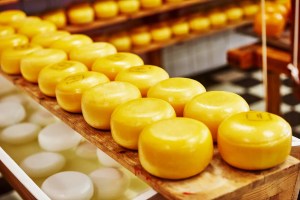Origin fraud occurs when a food is misrepresented with respect to its geographical origin; it’s a type of fraud that can be categorised as ‘mislabeling’.
Examples of mislabeling include:
- describing a fruit or vegetable as ‘organic’ when it was conventionally grown
- cheeses and meats labeled as kosher or halal that are not
- Spanish olive oil falsely declared as being ‘Italian’. This is origin fraud.
Mislabeling is also called misbranding in some countries. Because it is intended to deceive customers and consumers it is illegal under consumer protection laws and trade/contract laws just about everywhere. Because almost every type of food fraud involves mislabeling to some extent, quoting statistics on mislabeling is difficult. As an example, a botanical supplement labelled as 100% turmeric extract but that actually contains 15% filler is both mislabeled and diluted. To make it even trickier, different organisations using different words to describe similar food fraud activities. Learn more about classifying food fraud types in this great Food Safety Tech Article. Suffice to say, mislabeling fraud is very common and, according to US Grocery Manufacturers Association, it affects around 10% of food products globally.

How do we expose origin fraud? Typically, origin fraud is uncovered after authorities have been tipped off about suspect activity in a supply chain, either by people from within the supply chain or by competitors of the mislabeled product. The evidence used to pursue the fraudsters often comes from either fraudulent documentation, or from testing of finished products. This year we have seen an increase in the use of authenticity testing by representatives of ‘authentic’ brands to expose fraudulent products. This is a trend that I expect to continue as test methods are improved, refined and can more easily be extended to assess specific product attributes.
I have been following this trend with interest and was reading, today, about alleged origin fraud in coffee in the United States. This is a case that is representative of the trend to use sophisticated test methods to authenticate finished product attributes. Another recent example would be honey testing in Australia. In the coffee case, growers from the Kona district of Hawaii have filed a lawsuit against retailers for allegedly selling ‘Kona’ coffee that does not contain a reasonable amount of coffee from the district. Kona coffee production is 2.7 million pounds, however more than 20 million pounds of coffee labelled ‘Kona’ is sold each year. The plaintiffs claim to have analytical test results to support their claims. Nineteen brands of coffee, sold by retailers including Walmart, Cosco and Amazon, have been named in the complaint. Chemical testing technology underpins this current lawsuit, as it allows the coffee growers to show, for the first time, the actual Kona content of the coffee that is being allegedly mislabeled. For this to be possible, the coffee growers would have had to organise for testing laboratories to create a database of chemical test results of authentic samples of Kona coffee. Databases like this are used to model a product’s unique chemical fingerprint using sophisticated mathematical computations. The test method can then be used to compare the ‘fingerprints’ of suspect brands against those of authentic products, such as Kona-grown coffee, and infer the amount of genuine material in each sample. Developing databases for this type of testing is expensive and time consuming. However, there are an increasing number of laboratories that have the machinery, skills and software to perform this work, so it is becoming more accessible to brand owners.

In cases that do not originate with product testing, it is activities in the supply chain that provide clues to origin fraud. This month there have been reports of origin fraud for a specialty vinegar, Modena balsamic vinegar. Modena balsamic is protected by a special geographical designation under European regulations. According to these rules, Modena balsamic vinegar must be produced using grapes only from certain regions in order to be considered authentically ‘Modena’. A massive fraud involving 15 million Euros worth of materials has been uncovered in Italy after a special operation by local authorities found that the wrong grapes were being used to produce this very expensive product. Although operational details about this investigation are scarce, these types of actions by authorities are often initiated after authorities have received a tip off from someone connected with the supply chain. Another example of such a tip-off includes this recent wine counterfeiting operation in which authorities became aware that a printing shop had received an order for 4,500 wine labels from a company that was not the brand owner.
More tip-offs and more testing are my predictions for 2019 and 2020. These are going to lead to more investigations, complaints and enforcement actions against perpetrators of food fraud. And that’s a win for everyone!
Want our help with a food fraud problem?

